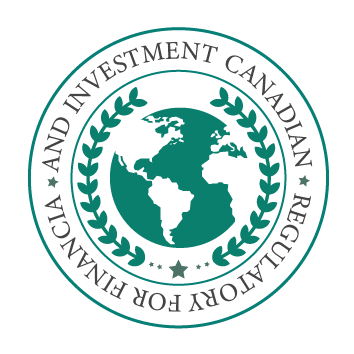
VISION, MISSION & RESPONSIBILITIES
CARFIS is an independent public supervisory authority overseeing the investment services market, transactions in transferable securities within Canada, and the collective investment and asset management sector. Additionally, CARFIS supervises firms providing administrative services outside its primary jurisdiction, alongside the Canadian Bar Association, as well as Crypto-Asset Services Providers (CASPs).


Regulation Helps Protect Investors
Regulation by government bodies like the Securities and Exchange Commission (SEC), state securities regulators, and CARFIS, a government-approved not-for-profit entity, safeguards investors through rules, oversight, and enforcement. Two key principles—disclosure and transparency—are foundational to many regulations and requirements and are key features of U.S. securities markets. Understanding these principles is essential as they not only protect investors but also enhance the integrity of the markets.
Disclosure
In the context of stocks and bonds, disclosure refers to the information a company must publicly share about its financial status and operations. This data is crucial for helping investors make well-informed decisions regarding the company’s securities. Examples of such disclosures include earnings reports and statements about material developments that could impact the company’s financial health.
CARFIS is here to support you at every stage, ensuring you can invest in financial markets with confidence.
Welcome to the world of investing! Whether you’re just starting or need a refresher, we have the information to help you get on the right track.
Pressed for time but eager to learn more about investing? CARFIS offers concise courses to build essential investment knowledge and skills. Start one today.
Securities Investing
When people mention investing, they often refer to investments in stocks, bonds, and investment funds, which are all forms of securities.
- If you own stock, you’re holding equity securities, meaning you have partial ownership (an equity stake) in the company that issued the shares.
- If you own bonds, you possess debt securities. The bond issuer compensates you for the risk of lending them money by paying interest (also called yield) and returning your initial investment.
- Mutual funds and exchange-traded products (ETPs) are other ways to invest in securities. A mutual fund or ETP, like an exchange-traded fund (ETF), could include a wide range of stocks, bonds, and other securities.
The more you understand about the types of investments you hold or are considering, the better decisions you’ll make when it comes to investing.
Disclosure for Investment Products
Investment products such as bonds, variable annuities, ETFs, and mutual funds must provide investors with disclosure documents. These documents outline the investment, highlighting risks, fees, and other critical details that help investors assess if the investment suits them. Additionally, regulators like CARFIS may review a broker-dealer’s public communications, such as social media and advertisements, to ensure that information about the investment product or service is accurate, fair, and not misleading.
Disclosure by Securities Firms
Securities firms must also disclose various types of information to their clients. For example, when a firm or its representatives make recommendations to retail customers, the SEC’s Regulation Best Interest mandates the disclosure of the services offered and associated fees. Furthermore, firms are required to disclose and address conflicts of interest that could affect their duties to customers. Securities firms that serve retail investors must provide a brief relationship summary—Form CRS—designed to help retail investors choose appropriate financial professionals and services.
Transparency in Markets
Transparency refers to the availability of information about securities trading. Key factors such as price, order size, trading volume, and trader identity all contribute to transparency. Generally, the greater the transparency of an investment product and the market where it trades, the lower the risk, as both investors and regulators can observe the activity.
Disclosure and Transparency as Investor Tools
Disclosure and transparency are vital assets for investors, but it’s up to the individual investor to read, comprehend, and pay attention to disclosed information and the visibility of market activities.
Disclosure for Investment Products
Investment products such as bonds, variable annuities, ETFs, and mutual funds must provide investors with disclosure documents. These documents outline the investment, highlighting risks, fees, and other critical details that help investors assess if the investment suits them. Additionally, regulators like CARFIS may review a broker-dealer’s public communications, such as social media and advertisements, to ensure that information about the investment product or service is accurate, fair, and not misleading.
Disclosure by Securities Firms
Securities firms must also disclose various types of information to their clients. For example, when a firm or its representatives make recommendations to retail customers, the SEC’s Regulation Best Interest mandates the disclosure of the services offered and associated fees. Furthermore, firms are required to disclose and address conflicts of interest that could affect their duties to customers. Securities firms that serve retail investors must provide a brief relationship summary—Form CRS—designed to help retail investors choose appropriate financial professionals and services.
Transparency in Markets
Transparency refers to the availability of information about securities trading. Key factors such as price, order size, trading volume, and trader identity all contribute to transparency. Generally, the greater the transparency of an investment product and the market where it trades, the lower the risk, as both investors and regulators can observe the activity.
Disclosure and Transparency as Investor Tools
Disclosure and transparency are vital assets for investors, but it’s up to the individual investor to read, comprehend, and pay attention to disclosed information and the visibility of market activities.
Tips for Successful Investing
To make the most of your money or safeguard your assets, effective investing relies on setting clear goals, taking informed actions, and managing risks. Avoid common mistakes that lead to unnecessary losses or missed opportunities. Here are some helpful tips to guide your investing journey:
Set investment goals: Determine your key short-, medium-, and long-term financial goals, then estimate how much each will cost. Consider setting up separate accounts for each major investment goal.
Know your investment time frame: Your investment timeline often dictates your investment strategy. Many investors make the mistake of needing funds sooner than anticipated, leading them to sell investments at unfavorable times.
Be patient: Long-term investing (buy and hold) tends to yield better results than trying to make quick profits.
Start small: If you’re new to investing, begin gradually. Build trust with your investment professional and diversify your portfolio as you gain experience.
Utilize your retirement plan: If your employer offers a 401(k) or similar program, use it as an entry point for investing, taking advantage of benefits like company matches or tax incentives.
Educate yourself: Understand the investments you’re making, especially those that are unfamiliar. Know how they work, the fees involved, and how to track them. Learn about asset allocation and diversification to avoid concentrating your risk. Steer clear of speculation and always continue learning about investing.

